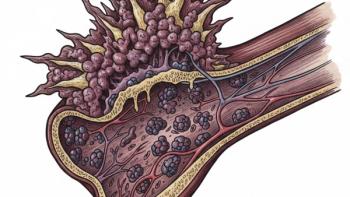
Living in Low-Income, Rural Households Associated With Greater Risk of Death for Patients With Liver Cancer
Patients with hepatocellular carcinoma who live in low-income and rural households are less likely to receive high quality care and therefore are more likely to be diagnosed with an advanced stage cancer.
Patients from rural, low-income households with hepatocellular carcinoma (HCC) are more prone to a more advanced tumor stage at diagnosis and higher mortality due to disparities in high-quality liver care, according to data recently published in Cancer.
Ethnic minorities and individuals living in lower-income neighborhoods are at risk for inadequate HCC surveillance, the authors wrote. That inadequacy, according to the authors, has the potential to affect the outcomes of patients with HCC in these populations.
“Poor HCC surveillance leads to more advanced tumor stage at diagnosis, which reduces potentially curative options, leading to worse survival outcomes,” they wrote. “Disproportionately lower rates of HCC surveillance among ethnic minorities and individuals of low socioeconomic status, including those from underserved rural regions and with lower household income, may further contribute to the disparities in HCC outcomes among these vulnerable populations.”
The authors conducted a comprehensive analysis study using the most updated information from the Surveillance, Epidemiology, and End Results (SEER) cancer database from the National Cancer Institute, to investigate the disparities in HCC advanced tumor status at diagnosis and survival and if neighborhood, race, and income contribute to those factors.
There were 83,237 adults (76.7% men; 63.7% aged 60 years or younger) diagnosed with HCC from 2004 to 2017. Half of the patients were non-Hispanic White, 19.5% were Hispanic, 15.7% were Asian/Pacific Islander and 13.5% were Black. Almost half (49.1%) of the patients had localized stage HCC at time of diagnosis and 14.4% had distant-stage HCC. A total of 64.5% of patients were from a metropolitan area, and 75.9% had a median annual household income of $55,000 or less.
When adjusting for household incomes, individuals in the lowest income group (less than $40,000) had a larger percentage of Black patients (25.2%), compared to their representation in the $70,000 and above household income group at 9%. Black patients were also more likely to live in rural locations (73.6%).
While men were three times more likely than women to be diagnosed with HCC, incidence trends have declined recently. HCC incidence among American Indians/Alaska Natives and Hispanics were the highest throughout the study, with 18.3 and 13.7 per 100,000 people, respectively. HCC incidence decreased for all races throughout the study, except for American Indians/Alaska Natives whose incidence continued to increase throughout.
Those living in more rural areas had a higher risk of advanced HCC and mortality, as well as individuals living in households with an annual income of less than $40,0000.
Overall, women had a higher survival rate than men and were the highest among Asians/Pacific Islanders. Those living in larger metropolitan areas and households with higher incomes had significantly higher survival than other patients.
“Despite controlling for HCC treatment, the treatment approach for advanced-stage HCC is fundamentally different (palliative versus curative intent), and this may partly explain the persistently higher mortality among rural and low-income patients with HCC,” the authors wrote.
Patients who have a lower income and live in rural areas are at a greater risk for mortality than those with higher incomes who live in metropolitan areas, as well as more advanced tumor stages. The authors noted that these disparities are “complex and multifactorial,” but are most likely due to a lack of access to proper treatment, care and resources.
For more news on cancer updates, research and education, don’t forget to





